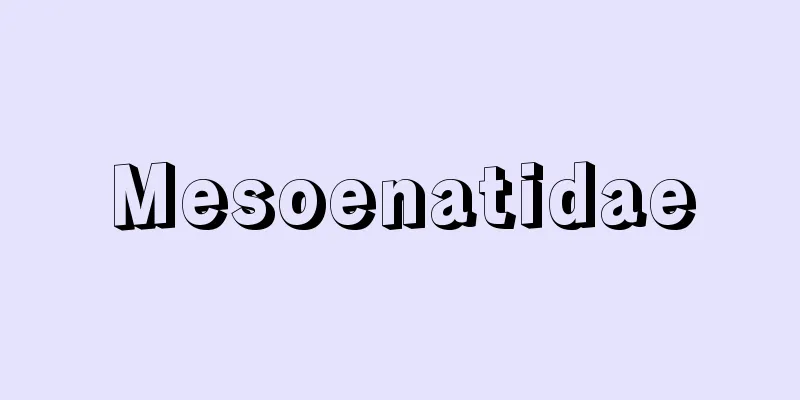Brain - Sac

|
In the nervous system of animals, the brain is the area where nerve cells gather and become the dominant center of neural activity. In invertebrates, the brain is generally the cephalic ganglion or cerebral ganglion. In vertebrates, it is the part that continues to the front of the spinal cord, and is covered by the meninges and further protected by the hard skull. The meninges are made up of three membranes, the dura mater, arachnoid mater, and pia mater, from the part closest to the skull. During development, the vertebrate brain develops from a neural tube that is formed when the ectoderm on the back of the embryonic body collapses along the midline. The front part of this tube becomes the brain tube and the back part becomes the spinal canal, but as development progresses, the shape of the brain tube is modified and three bulges appear from the front: the forebrain vesicle, the mesencephalon vesicle, and the rhombencephalon (rhomboid brain vesicle). The telencephalon and diencephalon differentiate from the forebrain vesicle, and the telencephalon gives rise to a pair of cerebral hemispheres. The mesencephalon vesicle becomes the midbrain. The rhombencephalon divides into the hindbrain and myelencephalon, with the dorsal side of the hindbrain forming the cerebellum and the ventral side forming the pons. The medulla oblongata differentiates from the myelencephalon. There are large phylogenetic differences in the telencephalon. In cyclostomes and fish, the telencephalon is only related to the sense of smell, but in amphibians it has an integrative function in addition to the sense of smell. In reptiles and above, the neocortex appears, which controls sensation and movement, and in mammals it occupies most of the telencephalon. The cerebellum is also involved in controlling and regulating the movement of animals, so it develops according to the animal's mobility and its ability to control it. The medulla oblongata, pons, midbrain and diencephalon (and sometimes part of the telencephalon) are collectively called the brainstem, which implies a stem that supports the cerebral hemispheres that extend upward. The brainstem is the basic structure of the vertebrate brain, and contains the center of functions important for maintaining the life of the animal. Its structure differs little from fish to mammals. There are also 12 pairs of cranial nerves emerging from the brain, numbered from the front as cranial nerve 1, cranial nerve 2, etc. They are as follows: (1) olfactory nerve, (2) optic nerve, (3) oculomotor nerve, (4) trochlear nerve, (5) trigeminal nerve, (6) abducens nerve, (7) facial nerve, (8) vestibulocochlear nerve, (9) glossopharyngeal nerve, (10) vagus nerve, (11) accessory nerve, and (12) hypoglossal nerve. These nerves are involved in sensory reception and movement related to the head. The surface of the cerebral hemispheres is made up of layers of nerve cells, and inside of them there are a number of nerve fibers that go in and out of the surface. This surface is called the cerebral cortex, and the inside is called the cerebral medulla. The cerebral cortex is divided into three types of cortex: the paleocortex, which is the oldest phylogenetically, and the protocortex, which is the newest phylogenetically. The paleocortex and protocortex are collectively called the limbic cortex, and are related to not only the sense of smell but also instinctive and emotional behavior. The neocortex appears in reptiles, but birds lack the neocortex, and instead the striatum is more developed than in mammals. In mammals, the neocortex has developed significantly, and the paleocortex and protocortex have been pushed to the periphery of the cerebral hemispheres. The functions of the cerebral cortex are localized, and the centers for motor function and sensory function can be divided. Furthermore, in terms of sensory function, the centers for cutaneous sensory cortex, visual cortex, and auditory cortex are each distinguished. The cerebral cortex, which is not directly involved in movement or sensation, is known as the association cortex, where advanced neural functions such as comprehension, memory, and judgment are carried out. However, in the brains of animals, including primates, this association cortex is less developed than in humans. [Yasumi Arai] Human brainThe human brain, also called the cerebrum, and the spinal cord that continues below it make up the central nervous system. The brain is housed within the cranial cavity, and the spinal cord is housed within the spinal canal, where they are both protected. The human nervous system has the most advanced functions of any animal, and the differentiation of the nervous system has a correspondingly complex mechanism. Looking at the development of the human brain, an independent neural tube forms on the dorsal side of the fetus around day 28 of gestation, followed by three bulges in the front half of the neural tube. From the front, they are called the forebrain vesicle, the mesencephalon, and the rhombencephalon. These become the primordium of the brain. The part following the rhombencephalon at the back becomes the spinal cord. The forebrain vesicle shows the greatest development, differentiating into the telencephalon and diencephalon. The mesencephalon vesicle becomes the midbrain. The rhombencephalon differentiates into the hindbrain (cerebellum and pons) and the medulla oblongata. The higher the animal, the greater the development and differentiation of the telencephalon; in humans, the telencephalon swells greatly on both sides to become the cerebral hemispheres. The part that supports the left and right cerebral hemispheres and acts as the stalk that supports the mushroom cap, that is, the entire part from the diencephalon, midbrain, pons, to the medulla oblongata, is called the brainstem. The weight of an adult brain is said to be about 1350 grams for Japanese males and about 1250 grams for Japanese females. There is little difference in brain weight between Japanese and Westerners. A newborn's brain weighs about 400 grams, but grows rapidly after birth. It doubles in size in the first year, reaching 1200 grams at 4-5 years old and 1300 grams at 10 years old, almost the size of an adult. The human brain is fully developed by the age of 20. The weight of the brain is said to be roughly proportional to height, and the ratio of brain weight to body weight is sometimes used as a standard for brain development. The complex gyri (so-called brain wrinkles) on the surface of the cerebral hemispheres and the weight of the brain are sometimes compared to the intelligence and personality of the individual, but there is no direct relationship and it is not a guide. For example, the brain of a sperm whale weighs 9000 grams, and the gyri and sulci of elephants and dolphins are much finer and more numerous than those of humans. [Kazuyo Shimai] Cerebral cortexThe surface layer of the cerebral hemispheres is lined with nerve cells, which is called the cerebral cortex (gray matter). The inside of the hemispheres covered by the cerebral cortex is the cerebral white matter (medulla), where nerve fibers enter and exit the cerebral cortex. Inside this cerebral white matter, there are groups of nerve cells that mediate between the cerebral cortex and the diencephalon and below. These are called the cerebral nuclei. The average thickness of the cerebral cortex is about 2.5 mm, with the thickest cortical area being 4 mm (the precentral gyrus of the frontal lobe) and the thinnest being 1.5 mm (the visual cortex of the occipital lobe, etc.). The cortex of the cerebral hemispheres is divided into three types in terms of development: the neocortex, the paleocortex, and the archacortex (protocortex). The paleocortex and archacortex (the olfactory lobe in a broad sense, the hippocampus, the amygdala, etc.) are extremely ancient in terms of development, and are responsible for primitive functions, and have been present in lower animals. In contrast, the neocortex (most of the hemispheres) is more developed in higher animals and has the function of embodying adaptive and creative behavior. The cerebral hemispheres thus serve as the seat of the highest integrative function of the nervous system. Furthermore, the brain stem and spinal cord serve as the seats that govern the static life phenomena that mediate these functions. The number of nerve cells in the cerebral cortex is said to be 14 billion, but in addition to nerve cells, the brain and spinal cord also contain glial cells. Glial cells have the same origin as nerve cells, but are cells that are separated from nerve cells early in the fetal stage and are not involved in the transmission of stimuli like nerve cells, but exist surrounding nerve cells, are closely related to the metabolism of nerve cells, and are responsible for protecting nerve cells. The number of glial cells is said to be 10 to 20 times that of nerve cells. The human cerebellum makes up 10% of the entire brain, and is one of the most well-developed in vertebrates. The cerebellum regulates the tone of skeletal muscles throughout the body and controls the sense of balance. In other words, it plays an important role in the reflex regulation of body posture and movement. [Kazuyo Shimai] Brain and BloodThe brain has a higher metabolism than any other part of the body, depending on its activity. The weight of the adult brain is only about 2.5% of the body weight, but the amount of blood flowing through it is 20% of the total blood volume of the body, with approximately 800 milliliters of blood flowing through the brain per minute. In other words, the oxygen and glucose sent by this amount of blood flow are used as energy required for nerve cell activity. For this reason, the brain has a rich blood vessel system. However, unlike blood vessels in other parts of the body, substances flowing through the blood vessels of the brain do not freely reach nerve cells, and some substances can be blocked. This is said to be due to the existence of the "blood-brain barrier" in the brain. Although the anatomical structure of this barrier is unclear, it is thought that the glial cells surrounding the nerve cells, the basement membrane on the outside, and the capillary endothelial cells are involved in the barrier formation. In the fetal brain, this barrier is not yet complete. The brain is surrounded by three layers of meninges (dura mater, arachnoid mater, and pia mater) and is contained within the skull. The space between the arachnoid mater and the pia mater (subarachnoid space) is filled with cerebrospinal fluid, protecting the brain from external shocks. [Kazuyo Shimai] [Reference] | | |The diagram shows the development of the human brain . ©Shogakukan Brain development The diagram shows a midline section of the human brain . ©Shogakukan Names of parts of the brain ©Shogakukan "> The vertebrate brain Source: Shogakukan Encyclopedia Nipponica About Encyclopedia Nipponica Information | Legend |
|
動物の神経系において、神経細胞が集合して神経作用の支配的中心となった部分をいう。無脊椎(むせきつい)動物では一般に頭神経節あるいは脳神経節が脳にあたる。脊椎動物では、脊髄の前方に続く部分で、脳髄膜に包まれ、さらに固い頭蓋(とうがい)によって保護されている。脳髄膜は頭蓋骨に近い部分から硬膜、クモ膜、軟膜の3枚の膜によってできている。脊椎動物の脳は、発生の過程で、胚体(はいたい)の背面の外胚葉が正中線に沿って陥没して生じた神経管から発生する。その前部が脳管、後部が脊髄管になるが、発生が進むにつれて脳管の形態が修飾され、前方から前脳胞、中脳胞、菱脳胞(りょうのうほう)(菱形脳胞)という三つの膨らみが現れる。 前脳胞からは終脳と間脳が分化し、終脳は左右1対の大脳半球をつくる。中脳胞は中脳になる。菱脳胞は後脳と髄脳に分かれるが、後脳の背側は小脳を、腹側は橋(きょう)を形成する。延髄は髄脳から分化する。終脳は系統発生的に大きな差がある。円口類や魚類では終脳は嗅覚(きゅうかく)に関係するのみであるが、両生類になると嗅覚のみでなく統合作用を有するようになる。爬虫(はちゅう)類以上になると、感覚と運動の統御を行う新皮質が現れ、哺乳(ほにゅう)類では終脳の大部分を占めるようになる。小脳も動物の運動の制御調節に関係しているので、動物の運動性とその制御能力に応じて発達がみられる。延髄、橋、中脳と間脳(および終脳の一部を含めることがある)を一括して脳幹というが、これは上方に広がった大脳半球を支える幹という意味が含まれている。脳幹の部分は脊椎動物の脳の基本構造で、動物の生命維持に重要な機能の中枢がこの部分にあって、魚類から哺乳動物を通してその構造にはほとんど差がない。 また、脳からは12対の脳神経が出ており、前方から順に第1脳神経、第2脳神経というように番号がついている。その内容は次のようである。(1)嗅神経、(2)視神経、(3)動眼神経、(4)滑車神経、(5)三叉(さんさ)神経、(6)外転神経、(7)顔面神経、(8)内耳神経、(9)舌咽(ぜついん)神経、(10)迷走神経、(11)副神経、(12)舌下神経。これらの神経は頭部に関係する感覚の受容や運動に関係している。 大脳半球の表面には神経細胞が層状に集まっており、その内側には表面へ出入りする多数の神経線維の集まりがある。この表面を大脳皮質といい、内側を大脳髄質という。大脳皮質は系統発生的にもっとも古い古皮質と原皮質、系統発生的に新しい新皮質の3種の皮質に区別される。古皮質と原皮質は辺縁皮質と総称され、嗅覚のみでなく、本能行動や情動行動に関係する部分である。新皮質は爬虫類から出現するが、鳥類では新皮質を欠き、かわりに線条体が哺乳類より発達している。哺乳類においては新皮質の発達が著しく、古皮質と原皮質を大脳半球の辺縁に押しやった形となっている。大脳皮質の機能には局在性があって、運動機能や感覚機能の中枢を区分することができる。さらに感覚機能では皮膚感覚野、視覚野、聴覚野などの中枢がそれぞれ区別される。運動や感覚に直接関与しない大脳皮質は、ものの理解、記憶、判断などの高度な神経作用を行うところで連合野といわれるが、霊長類を含めて動物の脳では、ヒトと比べてこの連合野の発達が悪い。 [新井康允] ヒトにおける脳ヒトの脳は脳髄ともよばれ、その下方に続く脊髄(せきずい)とともに中枢神経系を構成している。脳は頭蓋腔(とうがいくう)内に収容され、脊髄は脊柱管内に収められ、それぞれ保護されている。ヒトの神経系は動物のなかではもっとも高度の機能を備えており、神経系の分化もそれに応じて複雑な仕組みをもっている。 ヒトの脳を発生学的にみると、胎生28日ころに胎児の背側に独立した神経管ができあがり、続いて、神経管の前半部で三つの膨らみが形成される。前方から前脳胞、中脳胞、菱脳胞という。これらが脳の原基となる。菱脳胞に続く後方はそのまま脊髄となる。前脳胞はもっとも大きな発達を示し、終脳と間脳とに分化する。中脳胞はそのまま中脳となる。菱脳胞は後脳(小脳と橋(きょう))とこれに続く延髄とに分化する。高等な動物ほど終脳の発達分化が大きく、ヒトの場合、終脳は左右に大きく膨れて大脳半球となる。この左右の大脳半球を支えて、キノコの傘を支える柄にあたる部分、つまり間脳、中脳、橋、延髄までの部分全体を脳幹という。 成人の脳の重量は、日本人男子で約1350グラム、女子で約1250グラムとされる。日本人と欧米人との間では脳重量の差はあまりない。また、新生児の脳の重量は約400グラムであるが、生後、急速に大きくなっていく。生後1年で約2倍の大きさになり、4~5歳で1200グラム、10歳で1300グラム前後となり、ほぼ成人の値となる。ヒトの脳は20歳ころには完成する。脳の重量は身長にほぼ比例するとされ、脳重量と体重との比が脳の発育の基準として用いられることがある。大脳半球の表面にある複雑な大脳回〔いわゆる脳のシワ(皺)〕や脳の重さが、その個体の知能や性格と対比されることがあるが、直接の関係はなく、また目安にもならない。たとえば、マッコウクジラの脳は9000グラムもあるし、ゾウやイルカの脳回や脳溝はヒトよりもはるかに細かく、数も多い。 [嶋井和世] 大脳皮質大脳半球の表層には神経細胞が配列し、これを大脳皮質(灰白質)という。大脳皮質に覆われた半球の内部は、大脳皮質に出入する神経線維が走る大脳白質(髄質)である。この大脳白質の内部には神経細胞の集団が存在し、大脳皮質と間脳以下の部分を仲介している。これを大脳核とよぶ。大脳皮質の厚さは平均して2.5ミリメートルほどで、もっとも厚い皮質部位は4ミリメートル(前頭葉の中心前回)で、もっとも薄い部分は1.5ミリメートル(後頭葉の視覚野など)とされている。大脳半球の皮質は、発生学的には新皮質、古皮質、旧皮質(原皮質)の3種類に区分される。旧皮質と古皮質(広義の嗅葉(きゅうよう)部分、海馬(かいば)、扁桃(へんとう)核など)は発生学的にはきわめて古く、原始的な機能をつかさどる部分で、下等な動物から備わっている。これに対して、新皮質(大部分の半球皮質)は高等動物ほどよく発達し、適応行動と創造行動を具現するような働きをもっている。大脳半球は、このようにして神経系の最高の統合作用の「座」としての役割を果たしている。さらに脳幹と脊髄は、これらの作用に介在する静的な生命現象をつかさどる座としての役割を果たしている。大脳皮質の神経細胞の数は140億とされているが、脳や脊髄には、神経細胞のほかに神経膠(こう)細胞(グリア細胞)がある。神経膠細胞は神経細胞と起源が同じであるが、胎生の初期に神経細胞と分かれた細胞で、神経細胞のような刺激伝達には関係しないが、神経細胞の周囲を取り囲んで存在し、神経細胞の物質代謝に密接に関係するほか、神経細胞の保護などにあたっている。神経膠細胞の数は、神経細胞の10倍とも20倍ともいわれている。 ヒトの小脳は脳全体の10%を占めるが、脊椎(せきつい)動物のなかではきわめて発達のよいほうである。小脳は全身の骨格筋の緊張状態を調節し、平衡感覚をつかさどっている。すなわち、体の姿勢と運動の反射的調節に重要な働きをする部分である。 [嶋井和世] 脳と血液脳はその活動に応じて、体のどの部分よりも新陳代謝が旺盛(おうせい)である。成人の脳の重量は体重の約2.5%にすぎないが、脳を流れる血液量は体全体の血液量の20%にも及び、1分間におよそ800ミリリットルの血液が脳を流れる。つまり、これだけの血液量の流入によって送り込まれる酸素とブドウ糖は、神経細胞の活動に必要なエネルギーとして使われる。このため、脳には豊富な血管が発達している。しかし、脳の血管は、他の部分の血管とは異なり、その血管内を流れる物質は自由に神経細胞に到達するということではなく、物質によってはせき止められてしまう。これは、脳の「血液‐脳関門」の存在のためとされている。この解剖学的構造は明確でないが、神経細胞の周囲を囲む神経膠細胞とその外側の基底膜、毛細血管内皮細胞が関門形成に関与していると考えられている。胎児の脳では、まだこの関門は完成していない。脳は三重の脳膜(硬膜、クモ膜、軟膜)に包まれて頭蓋骨内に収められているうえ、クモ膜と軟膜との間隙(かんげき)(クモ膜下腔(くう))には脳脊髄液が満たされているため、外部からの衝撃に対して防御されている。 [嶋井和世] [参照項目] | | |図はヒトの脳の発生を示す©Shogakukan"> 脳の発生 図はヒトの脳の正中断面を示す©Shogakukan"> 脳の各部名称 ©Shogakukan"> 脊椎動物の脳 出典 小学館 日本大百科全書(ニッポニカ)日本大百科全書(ニッポニカ)について 情報 | 凡例 |
<<: Novatianus (English spelling)
Recommend
Insurance terms and conditions
Also called insurance clauses. In an insurance con...
Nagayuki Ikeda
1587-1632 A daimyo in the early Edo period. Born ...
Phoronida
…However, there are some points that do not match...
Shangri-La (English name)
...In the 20th century, the Russian mystic Roeric...
Amanita virosa (English spelling) Amanitavirosa
…[Rokuya Imaseki]. . … *Some of the terminology t...
Johnson, Uwe
Born: July 20, 1934. Kamin, Pommern [Died] 23/24 F...
Immune stimulant - Men'e Kisoku Shinzai
Drugs that promote the body's immune response....
Chosho
One of the government offices in the Kokuga (prov...
Automotive industry - Automotive industry
A division of the transportation machinery industr...
Willow bug flounder (willow bug flounder) - Willow bug flounder (English spelling)
A marine fish of the family Pleuronectidae in the ...
Meek, JM (English spelling) MeekJM
…The second stage of the discharge path formation...
Severus Antoninus, MA (English spelling)
…Reigned 211-217. Caracalla was nicknamed after t...
Kortschak, HP (English) KortschakHP
…Their research was first carried out using unice...
House Committee on Un-American Activities - House Committee on Un-American Activities
...The origins of such national policy review and...
"The Seven Roles of Osome" - Osome no Nanayaku
...3 acts, 8 scenes. Commonly known as "Osom...







![Yoshida [town] - Yoshida](/upload/images/67cd19aa27c22.webp)

